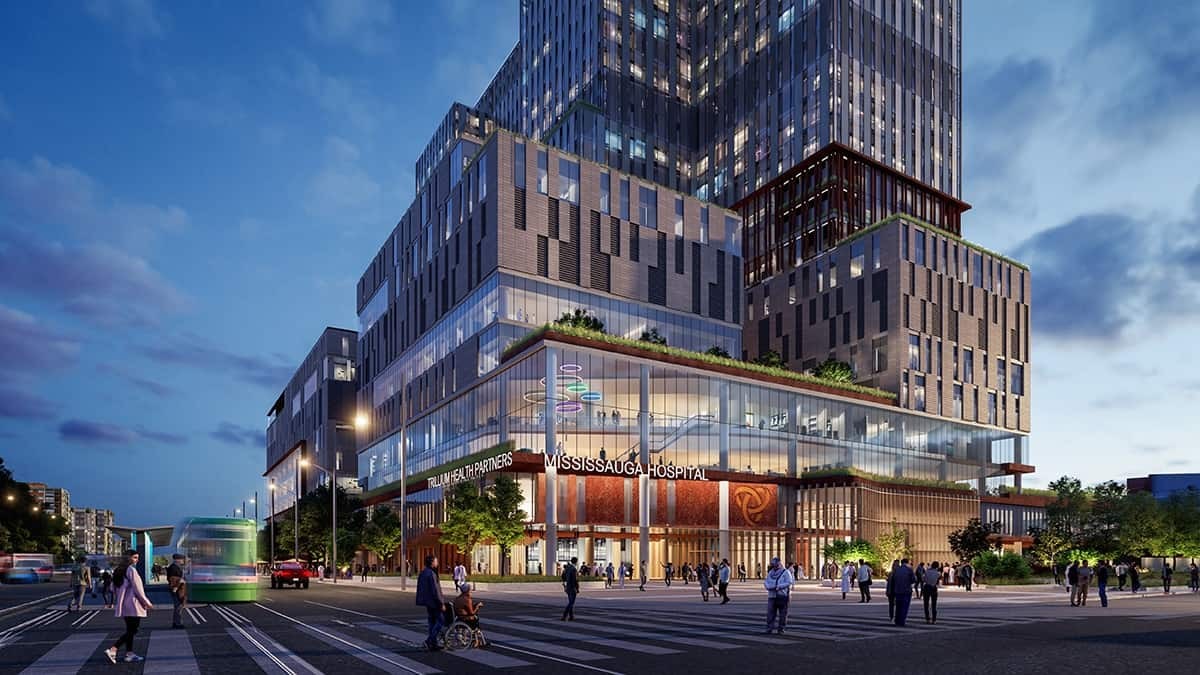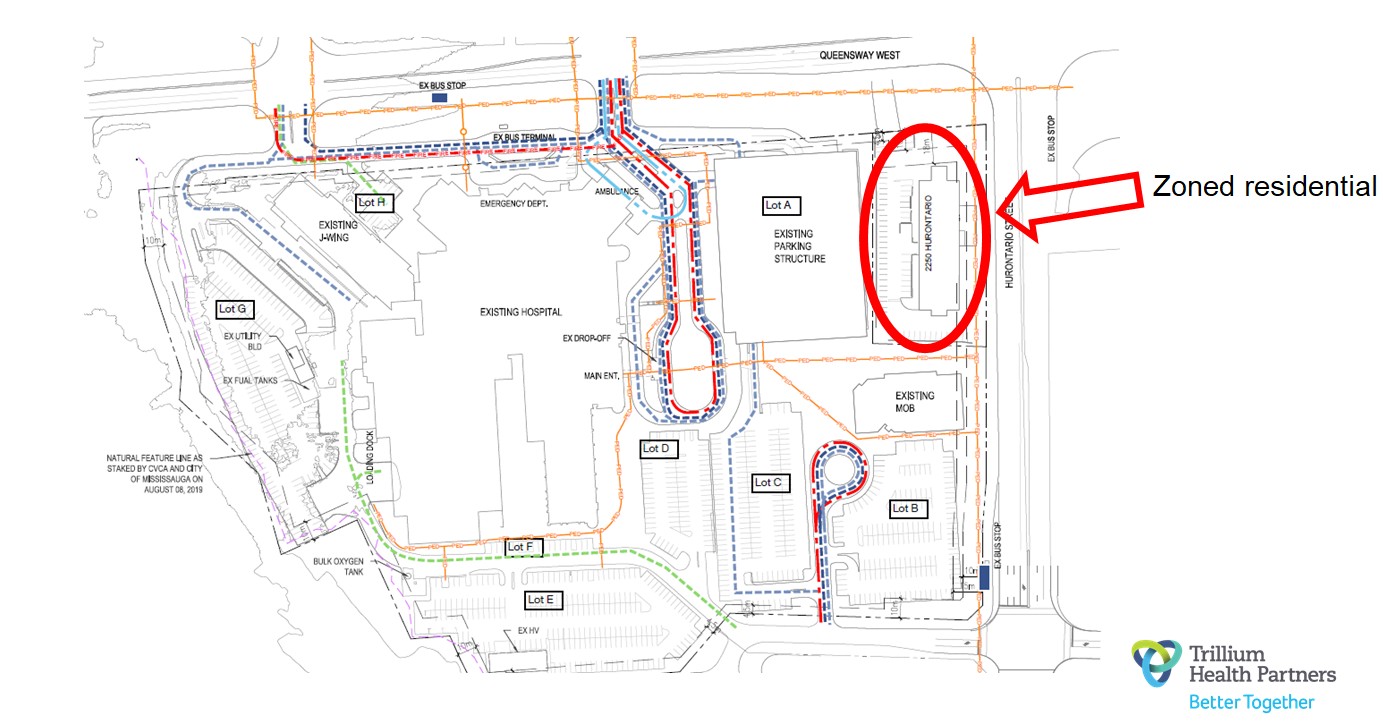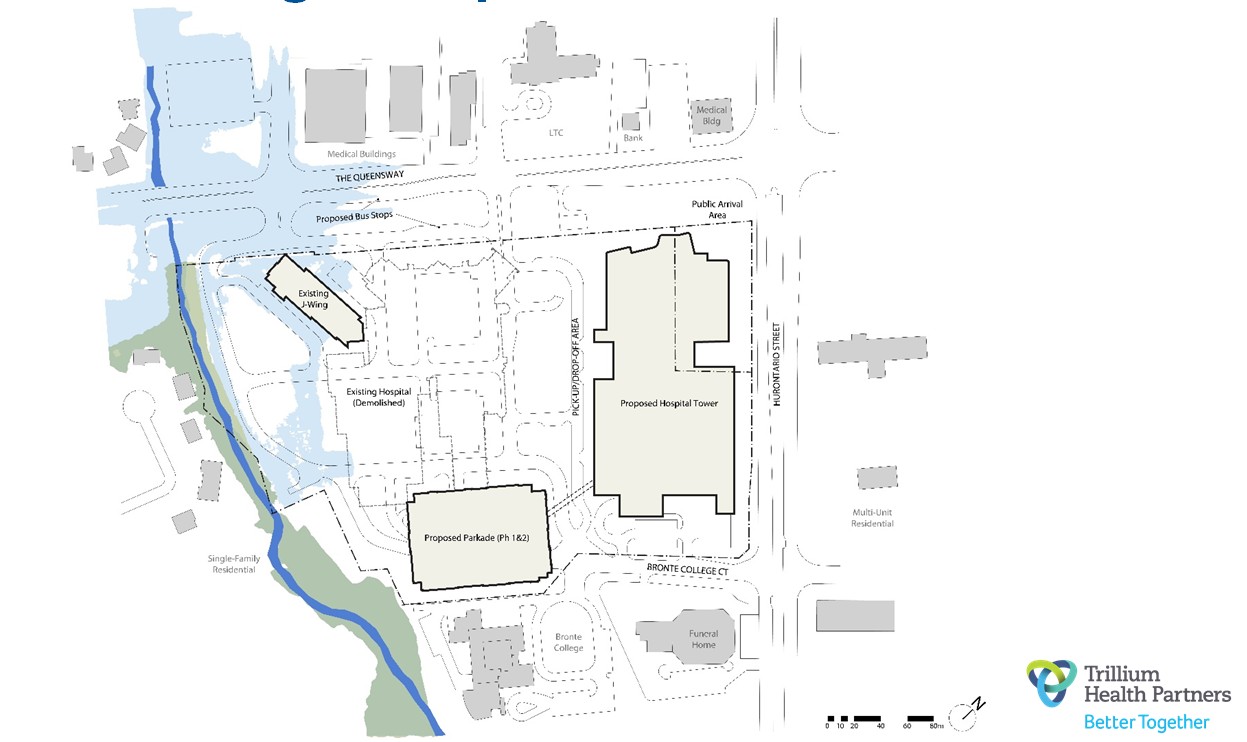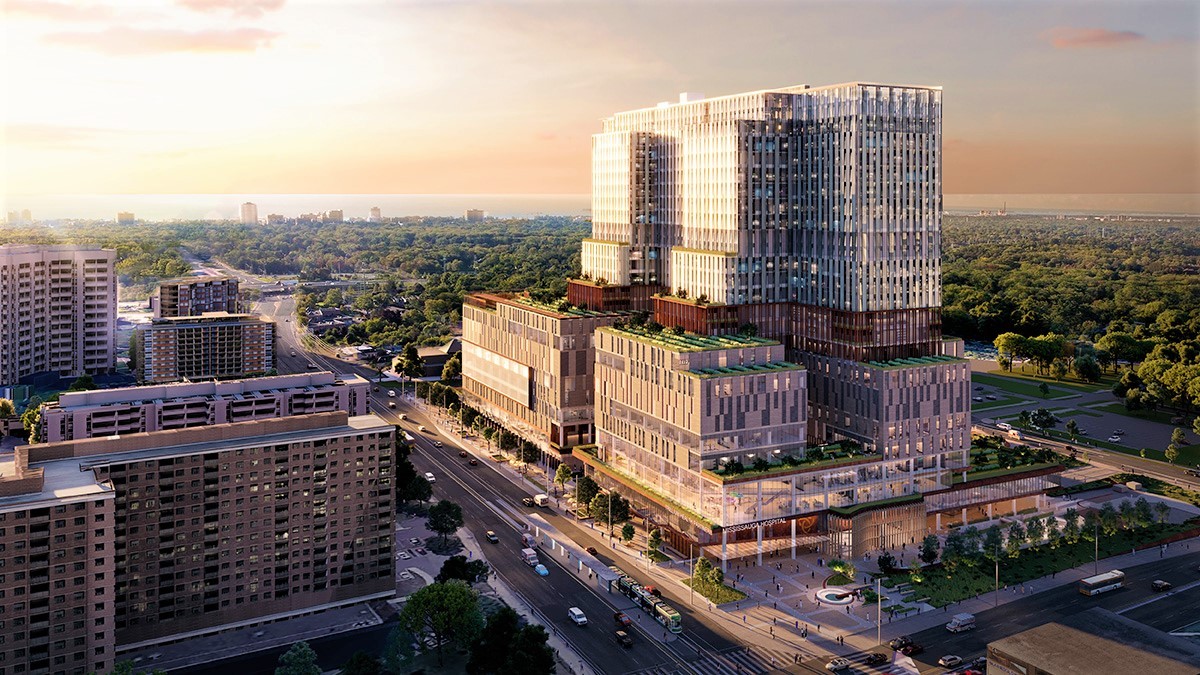
Mississauga supports sped-up planning process for part of $2 billion mega-hospital expansion
Mississauga rarely likes to involve the provincial government in its municipal affairs, especially when it comes to planning and building the community.
A vocal set of council members and senior staff have offered caution, in some cases, on minister’s zoning orders (MZOs), which allow the minister of municipal affairs and housing to bypass the local planning and approval process for a wide range of development applications and other projects. When enacted, an MZO allows proponents to avoid many aspects of the Planning Act, including certain bylaws put in place by cities meant to protect the public and the community at large from being forced to live with features they do not want. The benefit of this special tool is that it can cut through the “red tape” of local bureaucracy and expedite projects for the benefit of the public.
These are the very reasons Mississauga City Council asked for an enhanced minister’s zoning order (EMZO) for a portion of the new Trillium Health Partners (THP) Mississauga Hospital, a more than $2 billion project to build one of the largest healthcare facilities in North America.
There are few differences between an MZO and EMZO. An EMZO gives the minister of municipal affairs and housing the authority of on-site plan control. This means a municipality no longer has direct control over the project and its footprint during the work. An MZO has similar powers, but allows the municipality to maintain oversight of the project under local planning staff. Neither tool can override certain planning authority in the Greenbelt Area, including lands covered in the Niagara Escarpment Plan and Oak Ridges Moraine Conservation Plan.
“They're typically used when there is either a contentious project that has been kind of stalled in the public process and the city council feels that they cannot move forward by themselves, and need the support of the provincial government,” Alexander Wray, a Western University geography and environment PhD student who also has a degree in planning, told The Pointer.
In recent history Mississauga has only asked for one other MZO, which was for a movie studio in Ward 5 at Hurontario Street and Derry Road. Staff have encouraged use of caution to Council when requesting an MZO or EMZO.
THP’s President and CEO Karli Farrow delegated to council recently, where she laid out the reasoning for an EMZO, requesting it for the expedited planning for a specific area of the future hospital footprint. On the same agenda, Ward 7 Councillor Dipika Damerla presented a motion to endorse THP’s request for the EMZO, which was passed.
According to THP’s plans, one portion of the land closest to Hurontario Street is being occupied by Camilla Care Community Long Term Care (LTC) home. The hospital is in the process of buying the land. According to Farrow, an EMZO is needed to quickly rezone the land from residential to institutional so THP’s patient tower can be built.


The expansion will allow the hospital to create a 22-storey patient tower with over 950 beds.
(Trillium Health Partners)
According to THP, the beds from Camilla Care will continue to be operational despite the land going to the new hospital. There is an agreement between THP and Sienna Senior Living (the owners of Camilla Care Home) and Partners Community Health (PCH). When the land sale is complete, PCH will obtain the licenses to operate the 236 beds at Camilla. The construction to tear down the building will only happen after a new 632-bed LTC home on Speakman Drive is finished, making sure Mississauga doesn’t lose LTC beds in the process.
Both THP and Damerla referenced expediting the rezoning process as the main reason for the EMZO, which according to both “can take in excess of 12 months” to pass.
What council did not discuss prior to passing the motion for the EMZO, was the authority under the Planning Act they are giving up. Council members will have to balance the benefit (getting a hospital built faster) with the potential trade-off from distributing power to the Province and the private sector partners, and what it means for the public.
Farrow convinced council the good outweighs the negative. In her presentation, she detailed how beneficial the hospital will be for a growing municipality, the job creation it will bring and the public interest to see the project completed on time. Farrow also explained without an EMZO, THP would go through the traditional rezoning process which could delay the project, costing the hospital upward of $12 million a month, limiting its ability to complete the development on time and within budget.
In the past, Mississauga staff have been clear, very few projects should consider an MZO/EMZO because of the power it takes away from the City and the public. Staff explained in previous council meetings and reports, the tool should only be used for projects with direct public benefit, like affordable housing, public health, significant job creation and LTC homes.
“Staff are of the opinion that in most cases the benefits derived from MZOs are not worth deviation from the standard planning process,” a January 2021 report cautioned.
One factor that cannot be ignored is the need for the hospital.
Not only will the giant 950-bed facility add almost 50 percent more capacity, it will update the current outdated infrastructure. The site at 100 Queensway West was built in 1958 and served the various townships surrounding it at the time, until the Credit Valley Hospital came online in 1985, which has since been updated.
In 1986, the year after Credit Valley Hospital opened, the population of the area now known as Mississauga was 374,005. Estimates from Statistics Canada in 2020 pegged the population at 769,050. Mississauga’s population has more than doubled since 1986, but it does not have four hospitals to accommodate that growth.
Mississauga in the next 30 years will have a significantly larger population (close to 1 million by 2051) and will have to develop infrastructure now before more residents arrive.
If this is not planned properly, with poor local leadership that neglects the most important needs of a rapidly growing community, Mississauga will face the same crisis caused by Brampton’s woeful local leadership, at all three levels of government, as that city continues to deal with a dire healthcare reality—it is synonymous with hallway healthcare and only has one full-service hospital for a population of about 700,000.

The new Mississauga Hospital will be one of the largest in North America.
(Trillium Health Partners)
Mississauga Council is aware of the need for the hospital, but City staff have recently said an EMZO won’t necessarily speed up the process. When Ontario asked for feedback on the enhancement of MZOs, one of the reasons staff didn’t approve of them was because, “City staff are also not convinced that their use will always result in more timely development outcomes.”
The report details how efficient the Planning and Building Department team is, citing its success in being efficient as a reason against the expediting intent of an EMZO.
“The Department frequently receives positive feedback from the development sector on how smoothly applications are able to move through the City’s processes,” staff wrote in their report.
Of course, in all developments there are different delays, but if the sole reason for the request was to fast-track some of the early zoning needs, while this would give away vital control over other phases of the process, is there a need for the EMZO?
Chris Rouse, the City’s director of development and design, told The Pointer, “[it] is likely to result in a more timely development outcome. However, with 2022 also being a municipal election year, that adds additional timing challenges. The EMZO is in effect once issued by the Province and would allow for the new hospital to be constructed sooner.”
THP promised to continue consultation with the public, Indigenous communities, Council, the Credit Valley Conservation Authority, which are typically cut out from projects under EMZOs.
Section 47 of the Planning Act outlines the powers a MZO/EMZO have over municipal authority, by-laws and general planning. According to the Act, an MZO prevails over a by-law even if there is a conflict. “The Minister may by order… in respect of any land in Ontario, exercise any of the powers conferred upon councils by section 34 , 38 or 39,” the Act reads.
Sections 38 and 39 explain the temporary power the ministry has over the process of creating local by-laws or rezoning for land. Section 34 lists the power the ministry gains under MZOs over a parcel of land within the border of the municipality.
Essentially, when an MZO is enacted the Province strips the City of control over certain by-laws around planning and land use, which is why the tool can be “undemocratic”, Wray said.
“As planners, we are required to uphold the public interest, or more broadly, the public's interests and the public can have many interests,” he told The Pointer.
In Wray’s opinion, using an EMZO to rezone the land for the hospital is in the public’s best interest because of the benefits it will bring.
“This is where the minister's zoning order can sometimes appear undemocratic, but actually, is just another form of democracy in allowing the province to step in and ensure that certain projects are delivered.”
MZOs also give the Province the oversight to define the “height, bulk, location, size, floor area, spacing, character and use of buildings or structures.”
When council gives up its power, it also gives up the say of the public on the project. The sole exception to consultation with the “public body” is given to the Ministry of housing, under section 34 of the Planning Act.
Wray believes staff and Council have been highly involved in the design and development of the hospital expansion project, which is why they felt confident to push for the EMZO. The height and placement of the building have already been decided and staff are aware of the designs this far into the process. The EMZO takes away the opportunity of council members to ask for shadow or traffic studies, to potentially modify the design.
“I will say that shadow studies oftentimes are not responsible planning,” said Wray. “There are tools with which we delay or strategically change applications to suit the public’s issues with the development. So the public tells us the development is too tall. Well, let's do a shadow study and then use the results of the shadow study to justify cutting off storeys.”
When MZOs have been considered in the past, City staff have been wary of their use.
“City staff do not support the routine use of MZOs as they circumvent municipal autonomy and community engagement. Additionally, MZOs often involve significant deviations from in-force planning, heritage and environmental regulations,” a recent City report states.
“The key part of evaluating the minister's zoning order in the decision is how reasonable has a municipality been in their role in delivering the planning,” Wray said.
Did council members and planners know years ago THP was going to need the land rezoned for the future plans of the hospital?
“Certainly with some foresight in the planning department, and perhaps some foresight on the part of the hospital, this process could have been initiated years ago to allow for a much more expanded hospital on that site,” Wray said. “But of course, we're all imperfect humans and have really bad problems with foreseeing decisions.”
But like THP and the council members who endorsed the EMZO, he said a brand new, mega-hospital in a rapidly growing city is clearly one of the exceptions that justifies the curtailing of local planning authority.
Email: [email protected]
Twitter: @taasha__15
COVID-19 is impacting all Canadians. At a time when vital public information is needed by everyone, The Pointer has taken down our paywall on all stories relating to the pandemic and those of public interest to ensure every resident of Brampton and Mississauga has access to the facts. For those who are able, we encourage you to consider a subscription. This will help us report on important public interest issues the community needs to know about now more than ever. You can register for a 30-day free trial HERE. Thereafter, The Pointer will charge $10 a month and you can cancel any time right on the website. Thank you
Submit a correction about this story


